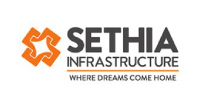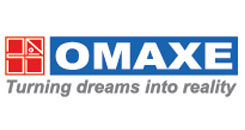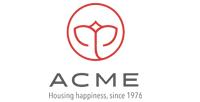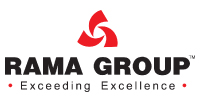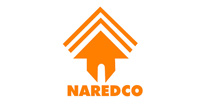The Vital Neural System: A Deep Dive into Safe Wiring for Futuristic Residential and Commercial Buildings

By Sumit Mitra, Managing Director, LAPP India
Electricity is the lifeblood of modern infrastructure, powering everything from the hum of refrigerators to the glow of computer screens. While the allure of sleek light fixtures and intuitive smart switches often steals the limelight, it’s the wiring system hidden behind walls and ceilings that truly powers our spaces.
Think of it as the nervous system of a building, essential, unseen, and vital. In today’s infrastructure, wiring has evolved into a crucial component that addresses safety, connectivity, sustainability, and performance all at once.
However, the importance of this hidden network of electrical wiring, connectors, circuit breakers, and distribution panels often goes unnoticed until something goes wrong.
What we dismiss as minor electrical issues, such as lights that dim unexpectedly or sockets that emit a faint buzzing sound, can be indicators of deeper problems.
These seemingly trivial signals could point to overloaded circuits, deteriorated wiring, or outdated panels. If ignored, they have the potential to escalate into significant electrical failures or even fire hazards, threatening both property and lives.
One Size Doesn’t Fit All: Residential vs. Commercial Wiring Systems
Wiring today is expected to do more than carry current; it must support a wide spectrum of building requirements. From enabling data transmission and powering fire alarm systems to connecting rooftop solar installations and home automation networks, modern wiring is the invisible backbone of future-ready living and working environments.
Residential and commercial buildings have vastly different electrical needs and the wiring system, be it the quality, grade of the material, or the load and energy requirements.
A cozy home requires a much lower electrical load compared to a bustling office building or a hospital brimming with medical equipment. This necessitates distinct approaches to wiring; a one-size-fits-all style will be insufficient as the capacity and complexity of the systems differ greatly depending on the building’s purpose and scale.
- Accessibility: Aesthetics v/s Ease of Maintenance. In a commercial setting, easy access to wiring is essential for ongoing maintenance, upgrades, and troubleshooting. Therefore, wiring layouts are typically designed for accessibility and serviceability. In residential spaces, however, wiring is more likely to be integrated discreetly into walls and ceilings to preserve the aesthetic of the home with minimal visual disruption
- Load Capacity: Built for Demand: Commercial buildings require wires with a much higher load capacity to handle the significant electrical demands of powerful equipment and complex lighting systems. Additionally, the use of high-grade copper conductors like THHN (Thermoplastic High Heat Resistant Nylon) might be specified for enhanced durability in harsh environments. Residential wiring, however, caters to a lower electrical load, typically sufficient for household appliances and electronics.
- Circuits & Phasing: Custom to Context: In India, most homes use single-phase wiring with a capacity between 60-100 Amps, depending on the regional electricity distribution network. These typically include three wires: neutral, positive, and negative. Commercial establishments, especially those like hospitals, hotels, and schools, use three-phase wiring consisting of two smaller wires running at 120 volts each and a wider wire running at 208 volts. These settings with higher electrical demands require thicker wires and larger circuits to efficiently handle the load and prevent malfunctions. This design helps distribute the electrical load more evenly, improving energy efficiency. Common wire types across both settings include PVC-insulated options like FR (Flame Retardant) and FRLS (Flame Retardant Low Smoke), which are favored for their cost-effectiveness and fire-safety features.
- Outlet Variations: Standard v/s Specialised: Commercial buildings often require high-grade outlets and connections to accommodate powerful equipment, machines, HVAC systems, and large-scale electrical devices. Residential buildings, on the other hand, primarily use standard outlets designed for household appliances.
- The Need for Speed: Data-Ready Cabling: Homes and offices today are smarter than ever before. Automation, smart TVs, gaming consoles, security systems, and hybrid work environments demand robust data connectivity. High-speed data cables, such as Cat 6 and Cat 6A, ensure uninterrupted performance, greater bandwidth, and future-ready infrastructure for homes and workplaces.
- Certifications That Matter: Every wire should come with the assurance of compliance. Cables that are ROHS (Restriction of Hazardous Substances) certified, are free from harmful chemicals and REACH compliant, and ensure environmentally safe composition. Cables manufactured using virgin-grade raw materials offer high tensile strength, better conductivity, and longer service life.
Building a Safety Net: Choosing the Right Electrical Components
India’s real estate sector is booming, driven by urban expansion and population growth. With this rise comes an urgent demand for safe, sustainable buildings, where wiring and fire safety are essential construction considerations, not afterthoughts.
Data from The Copper Association India reports over 100 fires caused by electrical faults. The Delhi Fire Service highlights that nearly 60% of fire incidents originate from electrical short circuits, overloads, substandard appliances, or improper wiring. These statistics are stark reminders of why wiring cannot be compromised.
Investing in quality wiring, especially that made with high-grade copper, pays off in safety, durability, and reduced long-term costs. When installed correctly and certified to the right standards, such systems are built to last with minimal maintenance.
To meet modern demands, today’s wiring is also evolving. Builders are increasingly adopting solutions that prioritise fire resistance, load management, and sustainability. Advanced cabling technologies now feature cold-drawn, oxidation-resistant copper, enhanced insulation for better heat dissipation, and colour-coded sheaths for quick identification.
Many of these cables are also solar-compatible, contributing to greener infrastructure aligned with India’s renewable energy goals.
By adopting these solutions, we not only ensure safety but also promote environmental responsibility. The disruption of electrical systems in both residential and commercial high-tech structures is critical for India’s infrastructure growth, powering futuristic buildings, one wire at a time.














